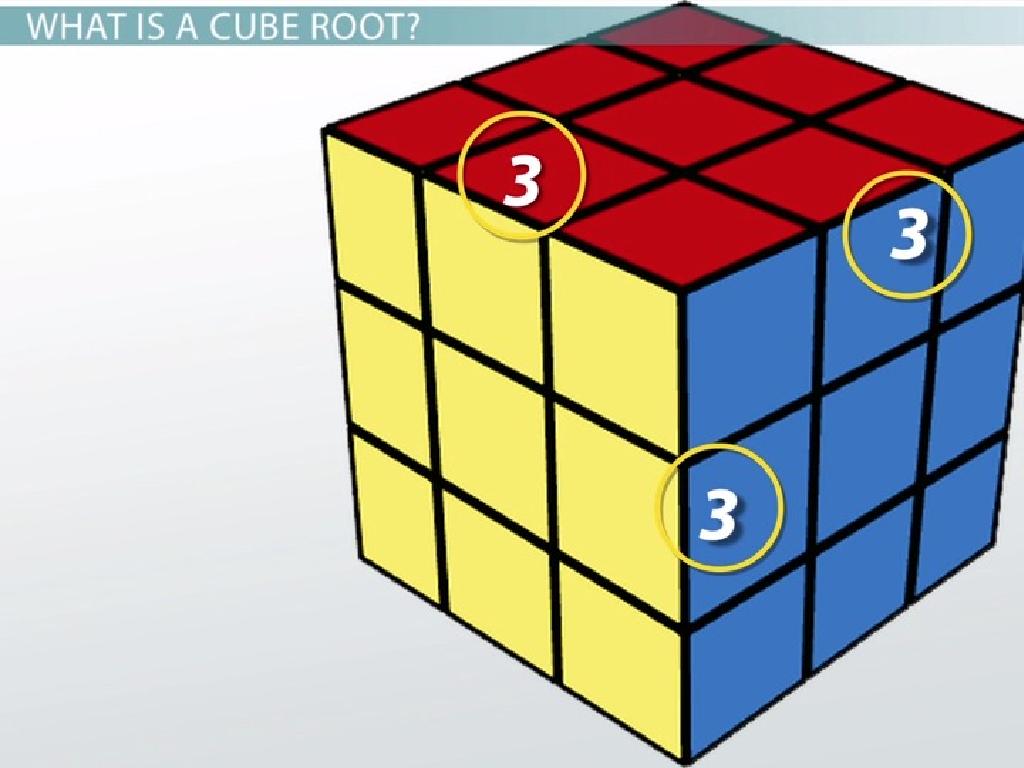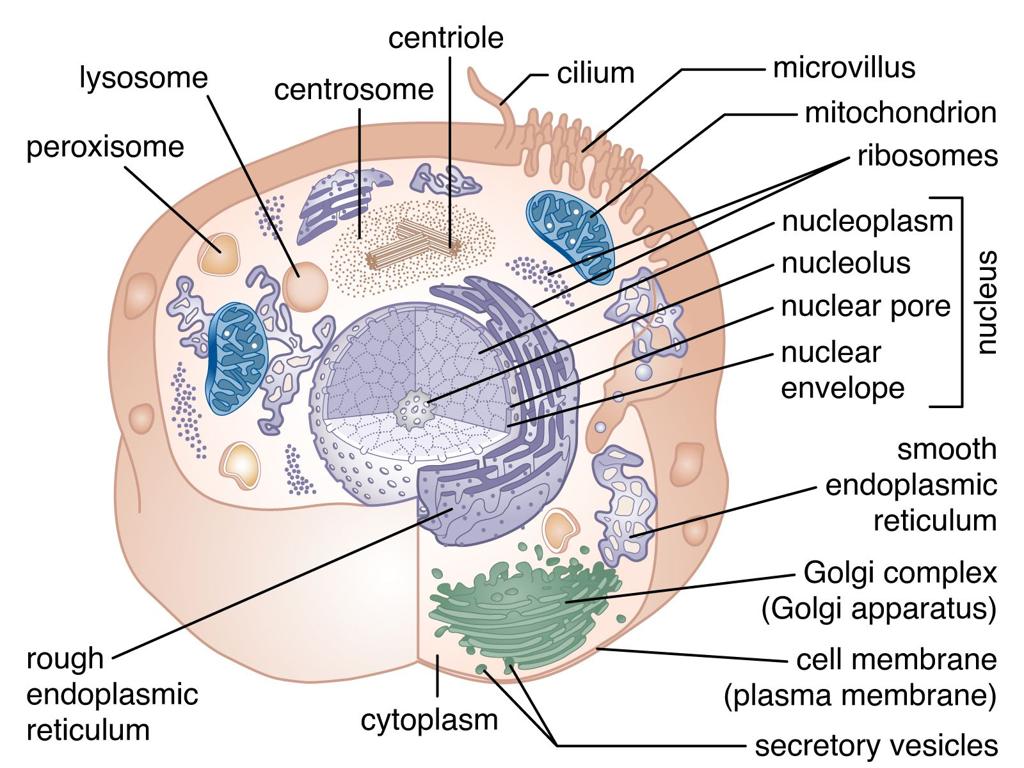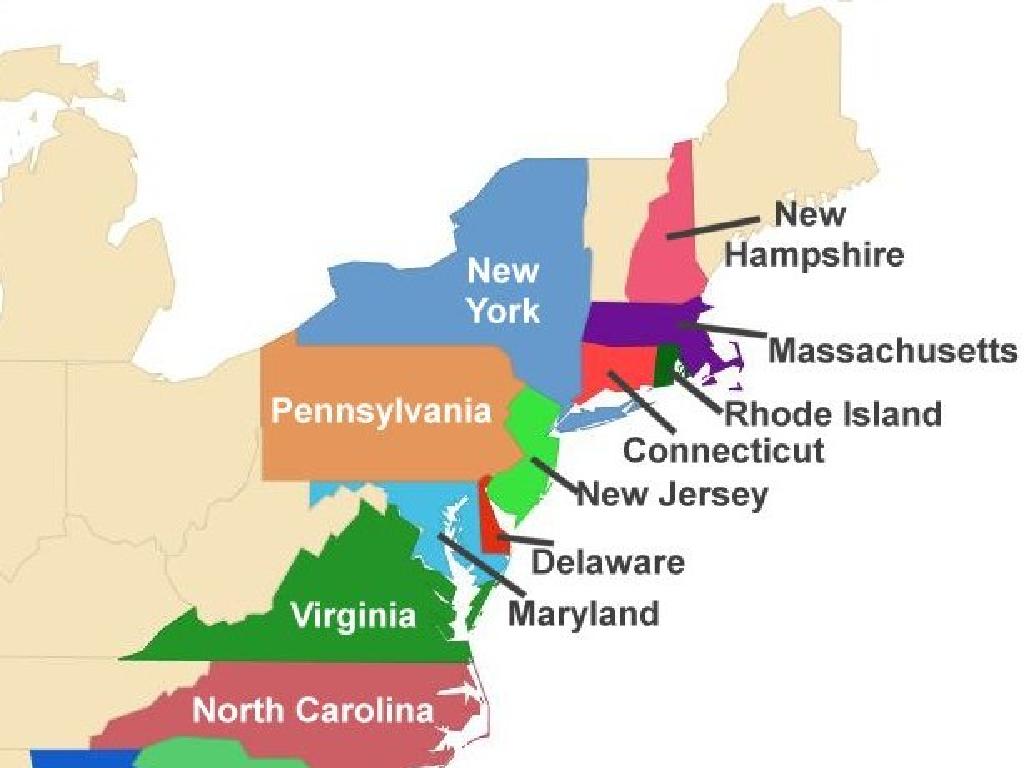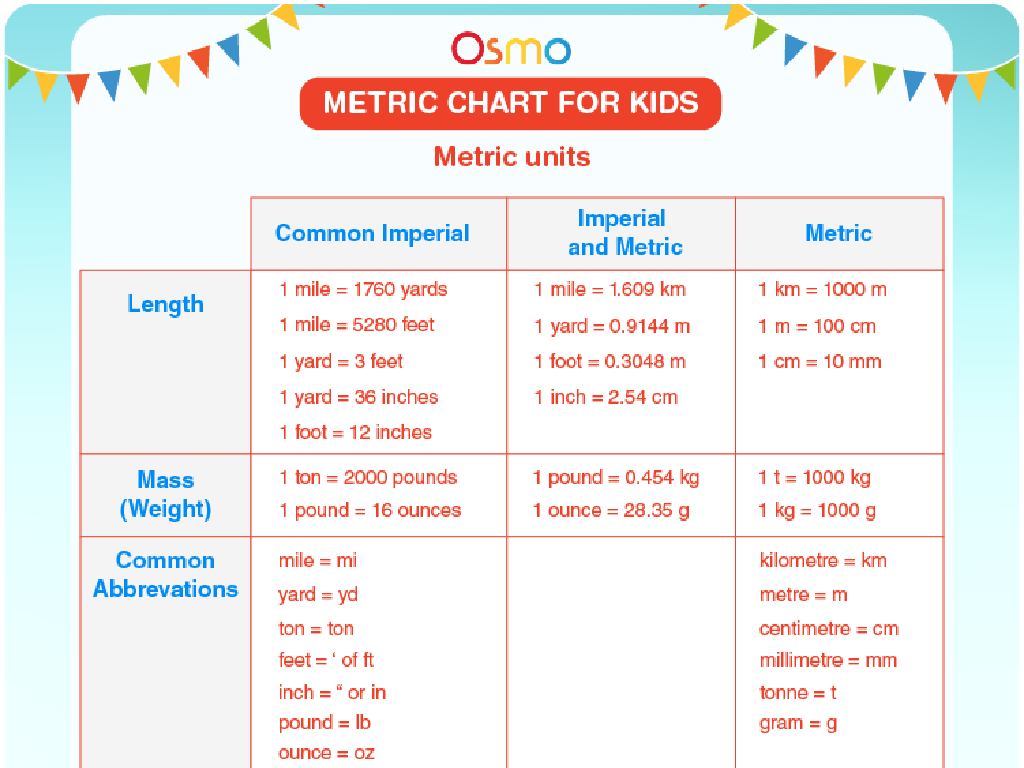How Does Particle Motion Affect Temperature?
Subject: Science
Grade: Seventh grade
Topic: Particle Motion And Energy
Please LOG IN to download the presentation. Access is available to registered users only.
View More Content
Particle Motion and Energy: Temperature Connection
– Explore particle motion basics
– Particles move in all states of matter
– Solids vibrate, liquids slide, gases fly freely
– Motion intensity affects temperature
– Faster movement means higher temperature
– Temperature: Measure of particle motion
– Thermometers detect this motion as temperature
|
This slide introduces the concept of particle motion and its relationship to temperature, a key topic in understanding thermodynamics. Begin by explaining that all matter is made up of particles that are always in motion. The state of matter determines how these particles move: vibrating in solids, sliding past each other in liquids, and moving freely in gases. Emphasize that the speed and intensity of particle motion directly influence an object’s temperature; the faster the particles move, the higher the temperature. Use a thermometer as a tangible example of how we measure the average kinetic energy of particle motion as temperature. Encourage students to think about how heating or cooling a substance affects the particles’ motion.
Particle Motion and Temperature
– Matter consists of particles
– Particles move with energy
– The more energy particles have, the faster they move
– States of matter affect motion
– Solids have least particle motion, gases have the most
– Motion influences temperature
– Faster particle motion means higher temperature
|
This slide introduces the concept of particle motion as it relates to temperature. Begin by explaining that all matter is composed of particles, which are in constant motion. The level of this motion is directly tied to the particles’ energy; the more energy they have, the faster they move. Discuss how this motion varies across different states of matter: particles in a solid are closely packed and vibrate in place, while those in a liquid slide past each other, and in a gas, they move freely and rapidly. Emphasize that temperature is a measure of the average kinetic energy of the particles in a substance, so as particle motion increases, so does temperature. Use examples like heating water to illustrate how adding energy increases particle motion and temperature.
Temperature and Particle Motion
– Temperature: hot or cold measure
– Average kinetic energy indicator
– Kinetic energy: energy of motion in particles
– Higher temperature, faster particles
– At higher temperatures, particles gain energy and move more rapidly
– Particle motion’s role in temperature
– Understanding how particle velocity affects temperature helps grasp heat transfer
|
This slide introduces the concept of temperature as a measure of how hot or cold an object is, which is directly related to the average kinetic energy of the particles within the object. The kinetic energy is the energy that particles have due to their motion. As the temperature increases, particles move faster because they have more energy. This is why we feel objects as being hotter at higher temperatures. It’s crucial for students to understand that temperature is not just a number but a reflection of particle motion and energy. Engage the class with examples like boiling water, where increased heat makes the water molecules move faster and eventually evaporate.
Exploring States of Matter and Temperature
– Solids: Particles tightly packed
– Particles vibrate but don’t change position
– Liquids: Particles move around
– Particles have space to slide past each other
– Gases: Particles move freely
– Particles are spaced out and move rapidly
– Particle motion links to temperature
– Higher motion means higher temperature
|
This slide introduces students to the concept of how particle motion affects temperature across different states of matter. In solids, particles are closely packed and only vibrate in place, which means they have lower kinetic energy and thus lower temperatures. In liquids, particles have more space to move around each other, indicating higher kinetic energy and a warmer temperature than solids. Gases have particles that are far apart and move freely at high speeds, reflecting the highest kinetic energy and temperatures. Emphasize the direct relationship between the amount of particle motion and temperature: more motion equals higher temperature. This foundational understanding will help students grasp further concepts in thermodynamics and states of matter.
Heat Transfer and Particle Motion
– Conduction: Direct contact heat transfer
– Particles collide, transferring energy to cooler areas
– Convection: Heat via fluid movement
– Warmer particles rise, cooler ones sink, creating a flow
– Radiation: Heat through electromagnetic waves
– Heat emitted even through empty space, like from the Sun
|
This slide introduces students to the three methods of heat transfer relevant to particle motion and temperature. Conduction involves direct contact where heat is passed from one particle to another, typically in solids. Convection occurs in fluids (liquids and gases) where heated particles become less dense and rise, while cooler particles sink, creating a circular motion. Radiation is the transfer of heat through electromagnetic waves and can occur without a medium, such as the heat we feel from the Sun. Understanding these concepts is crucial for students to grasp how particle motion affects temperature in different scenarios. Encourage students to think of examples from daily life, such as feeling the warmth of a stove (conduction), boiling water (convection), and feeling the sun’s warmth (radiation).
Particle Motion in Everyday Life
– Ice cream melting process
– Particles absorb energy, changing from solid to liquid
– Water boiling transformation
– Particles gain energy to transition from liquid to gas
– Metal spoon heating in soup
– Metal conducts heat, particles in spoon move faster
– Understanding heat transfer
|
This slide aims to illustrate how particle motion affects temperature through familiar examples. When ice cream melts, its particles absorb energy from the surroundings, causing them to move apart and change from solid to liquid. Boiling water is another example where added energy makes particles move so fast that they break free from the liquid and become gas. A metal spoon in hot soup gets hot because metal is a good conductor of heat; energy is transferred to the spoon’s particles, making them move faster and the spoon feels hot. These examples help students relate to the concept of particle motion and understand that temperature is a measure of the average kinetic energy of the particles in a substance.
Class Activity: Temperature vs. Particle Motion
– Measure water temperature in 3 states
– Predict particle motion changes
– How does energy affect particle speed?
– Observe and record temperature
– Discuss observations with class
– Share findings and conclusions
|
In this hands-on class activity, students will explore the relationship between temperature and particle motion by measuring the temperature of water in different states: solid (ice), liquid (room temperature), and gas (boiling). They will make predictions about how they think the motion of particles changes with temperature before the experiment. After recording their observations, students will discuss as a class how temperature affects particle motion. Teachers should prepare thermometers and safety equipment for boiling water, and ensure students handle all materials carefully. Possible activities include comparing results with classmates, graphing temperature changes over time, or relating observations to kinetic molecular theory.
Conclusion: Particle Motion and Temperature
– Recap on particle motion
– Particle motion’s role in temperature
– Faster particles mean higher temperature
– Everyday relevance of particle motion
– Insulation, weather patterns, cooking
– Open floor for questions
|
As we conclude, let’s review how the motion of particles is directly related to temperature. The faster the particles within a substance move, the higher the temperature of that substance. This concept is crucial in many aspects of everyday life, such as understanding how a thermometer works, why we use insulation in homes, and even in cooking. Encourage students to think about how this knowledge applies to real-world scenarios they encounter daily. Finally, open the floor for any questions or thoughts to clarify any lingering uncertainties and to engage students in critical thinking about the topic.
Homework: Particle Motion in Cooking
– Write a paragraph on particle motion
– Relate to temperature in cooking
– Include experiment examples
– Describe how heat changed water temp.
– Explain the effect on food
– How does heat make popcorn kernels pop?
|
Students are tasked with writing a paragraph that connects the concepts of particle motion and temperature, specifically in the context of cooking. They should reflect on the day’s experiment, perhaps where we heated water and observed the increasing motion of particles as the temperature rose, or how popcorn kernels pop when heated. This assignment will help them understand that as particles move faster with heat, the temperature increases, which is a fundamental concept in both science and culinary arts. Encourage students to think about the physical changes they observe in food as it cooks and to describe these changes in terms of particle motion.






